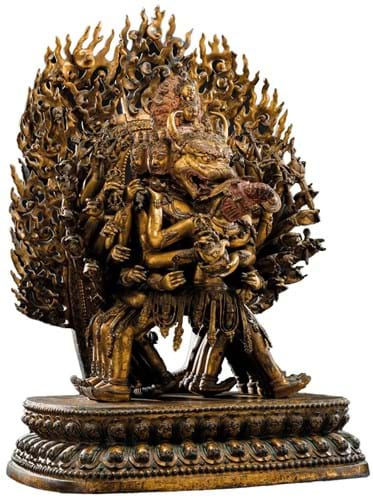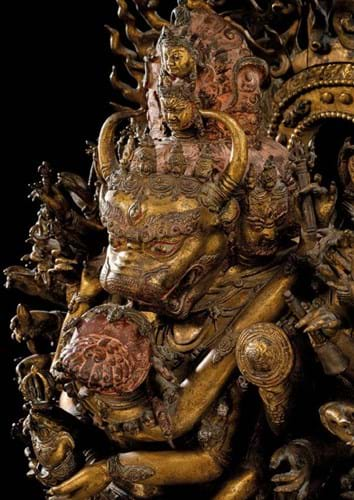It became the most expensive work of art ever sold in Germany when it made €9.5m (£8.64m) on June 23.
Key to its significance is its impressive size, extraordinary detail and an imperial Presentation inscription dated 1473. Cast in several pieces, it stands 3ft 1in (94cm) tall and depicts Vajrabhairava, the destroyer of death, with 34 arms, 16 legs, and a nine-faced head.
Anxi palace inscription
The inscription to the base says it was ‘bestowed’ on the Anxi Palace on the second day of the 11th month in the ninth year of the Chenghua period – November 2, 1473.
The occupants of the Anxi palace, located next to the central palace of the empress, were typically favourite concubines.
To date, only two imperial objects are known that can be directly connected to the palace through such detailed inscriptions – the other a Buddhist embroidery of the same period dated to the birthday of the Chenghua (1465-87) emperor in the year 1471.
The bronze has a provenance to the Gumpel collection sale held in 1904 at Hôtel Drouot, Paris (it is pictured in the catalogue), and was later sold in 1975 by New York dealership Alan Hartman Rare Art. It came for sale last week from a Swiss private collection.
Nagel said bidders for the piece included “Chinese museums and billionaires as well as a European museum” before it was knocked down to “an important Asian private collector” at a price that rose to €14.07m when premium and taxes were added.
The previous German auction record was held by the Max Beckmann painting Die Egyptterin sold by Grisebach in Berlin in 2018 for €4.7m.

















